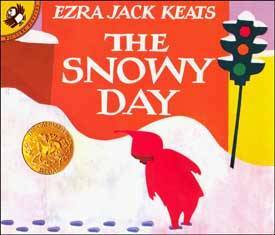
This year is the 50th anniversary of the outstanding picture book, The Snowy Day, by Ezra Jack Keats. There is so much to admire about this book. It takes the simplest of activities, a young boy taking a walk on a snowy day, and somehow makes it completely captivating. My kids especially love the pages where Peter makes tracks in the snow, with “toes pointing out, like this” and “toes pointing in, like that.” And of course, Keats really nails kid-logic with the thought that perhaps Peter could put a snowball in his pocket, to save for tomorrow. This quiet classic is a book that can still find an enthusiastic audience, even when sharing the shelves with the loud and sassy pirates and princesses of today’s picture book market.
Perhaps most impressive about this book is that it was among the first picture books to put an African-American child on the page. Interestingly, when Keats was interviewed about it, he says that it was not his intention to make a statement or break barriers with this book. And many are surprised to find that Keats himself is white. When asked why he chose to make Peter black, Keats responded, ““My book would have him there simply because he should have been there all along.”
Keats may not have intended it, but the impact of The Snowy Day in children’s literature is sure. It won the Caldecott in 1963, given to outstanding picture books. But I was most touched by a letter, written to Keats by an elementary school teacher. She said, “The kids in my class, for the first time, are using brown crayons to draw themselves. These are African-American children. Before this, they drew themselves with pink crayons. But now, they can see themselves.”
Bravo, EJK.